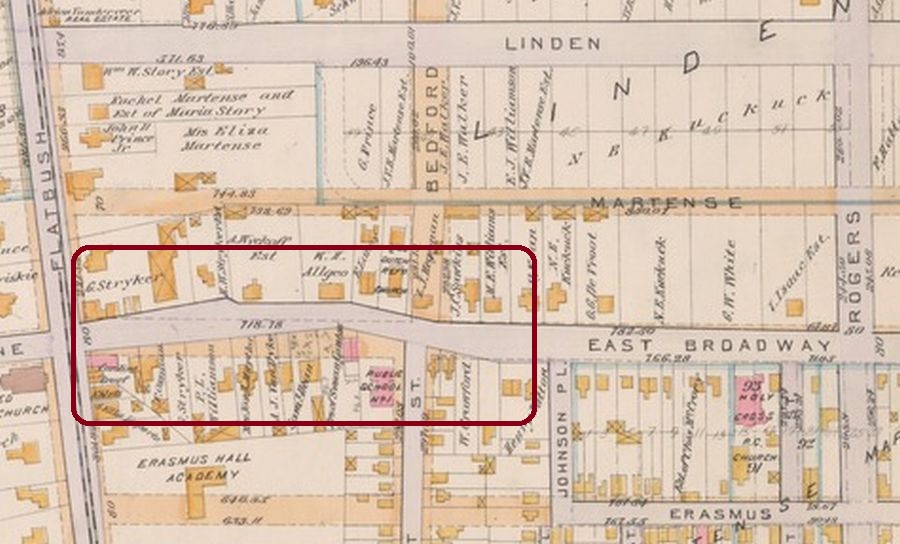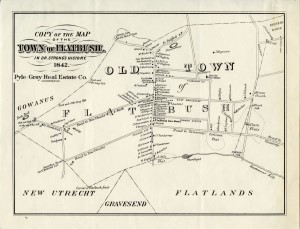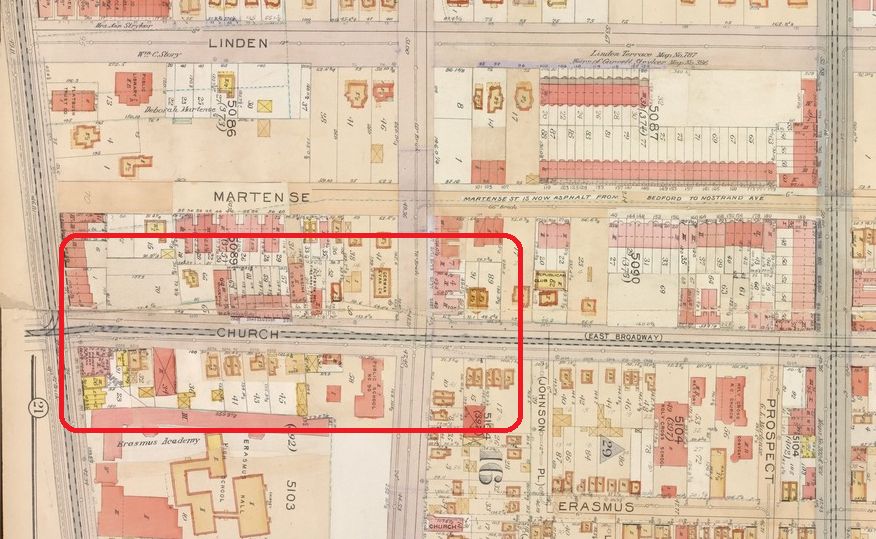STRAIGHTENING A CROOKED CHURCH (1904)

Brownstone Detectives investigates the history of our clients’ homes.
The story you are about to read was composed from research conducted in the course of one of those investigations.
Do you know the history of YOUR house?
*******************************************************************************************************************************
“You can’t drive straight down a crooked road.”
So goes the old saying which implies the difficulty of staying the course in precarious surroundings.
And the saying proved to be of true portent in the center of Flatbush in 1904.
BUT TO BEGIN AT THE BEGINNING…
Before the Town of Flatbush was unceremoniously subsumed into the City of Brooklyn, it was still a rustic expanse of farmland, dirt roads, and farmers.

When that great event happened in 1894, one of the challenges Brooklyn faced – which Brooklyn had taken on some 50 years earlier itself – was making the Flatbush roadways congruent with the rest of Brooklyn’s streets and avenues. This challenge would prove to be even more decidedly troublesome as the Department of Streets began to study the lay of the farmlines which made up the old town.
Nearly all of them – in the 1600s – were set at an angle.
CROOKED CHURCH
One of the roadways which ran alongside several of these farms was Church Avenue. Church was named after the Flatbush Reformed Protestant Dutch Church, which sat at the corner of Church and Flatbush avenues. As Church Avenue (formerly East Broadway) passed Flatbush and moved in an easterly direction, the avenue, according to a current newspaper article, became “almost serpentine in its course.”
By 1903, when the decision was made to bring Church into line with its confrere roadways, the City of Brooklyn had been incorporated into New York City, itself, and the lazy Church Avenue was then lined with houses, businesses, and tall mature shade trees.
This “improvement” was going to be no easy sell to the locals.
THE CORPORATION COUNSEL HAS SPOKEN

The following year, though, as the machinations of City’s Corporation Counsel and those of the Controller began to grind on the subject, talk and decisions seemed to move at a velocity that was incongruous with the local pace. And so, before much opposition to the straightening could be solicited, the work had nearly began.
In order to bring about the reshaping of this thoroughfare, though, a number of public hearings were to be held, legal cases determining ownership of land adjudicated, and numerous complaints against the changes heard.
Then, as if to add insult to injury, rumor began to spread that the City had found that it was “necessary to remove a number of buildings.”
The small-town politics of this former town, though, found its charges and its dissents unequal to the power and reach of the City’s Corporation Counsel, and, in due time, the locals lost out to the City with which it had so recently thrown in its lot. And in the process, along with the loss of many other buildings, a local landmark was forfeited to the wrecking ball – “the famous old Church avenue fire house was razed.”
By the time the above picture was taken in late 1904, Church Avenue had been “straightened” and the Brooklyn Rapid Transit Company had “already replaced its tracks to conform with the improvement.”
…and so the slog of public progress (and straightening) ground on…

———————————————————————————————————————–
 Brownstone Detectives is an historic property research agency. Our mission is to document and save the histories of our clients’ homes. From our research, we produce our celebrated House History Books and House History Reports. Contact us today to begin discovering the history of your home.
Brownstone Detectives is an historic property research agency. Our mission is to document and save the histories of our clients’ homes. From our research, we produce our celebrated House History Books and House History Reports. Contact us today to begin discovering the history of your home.